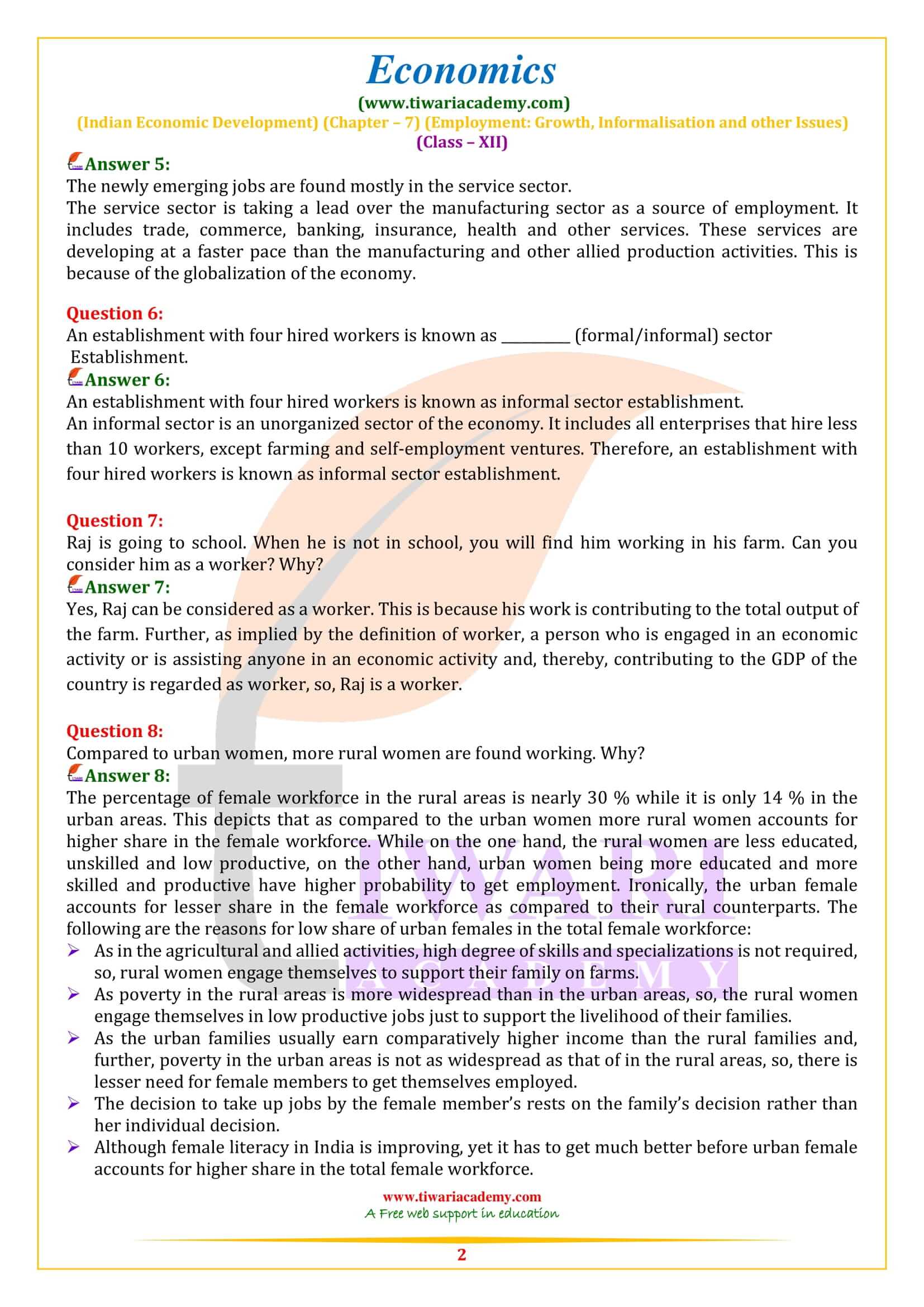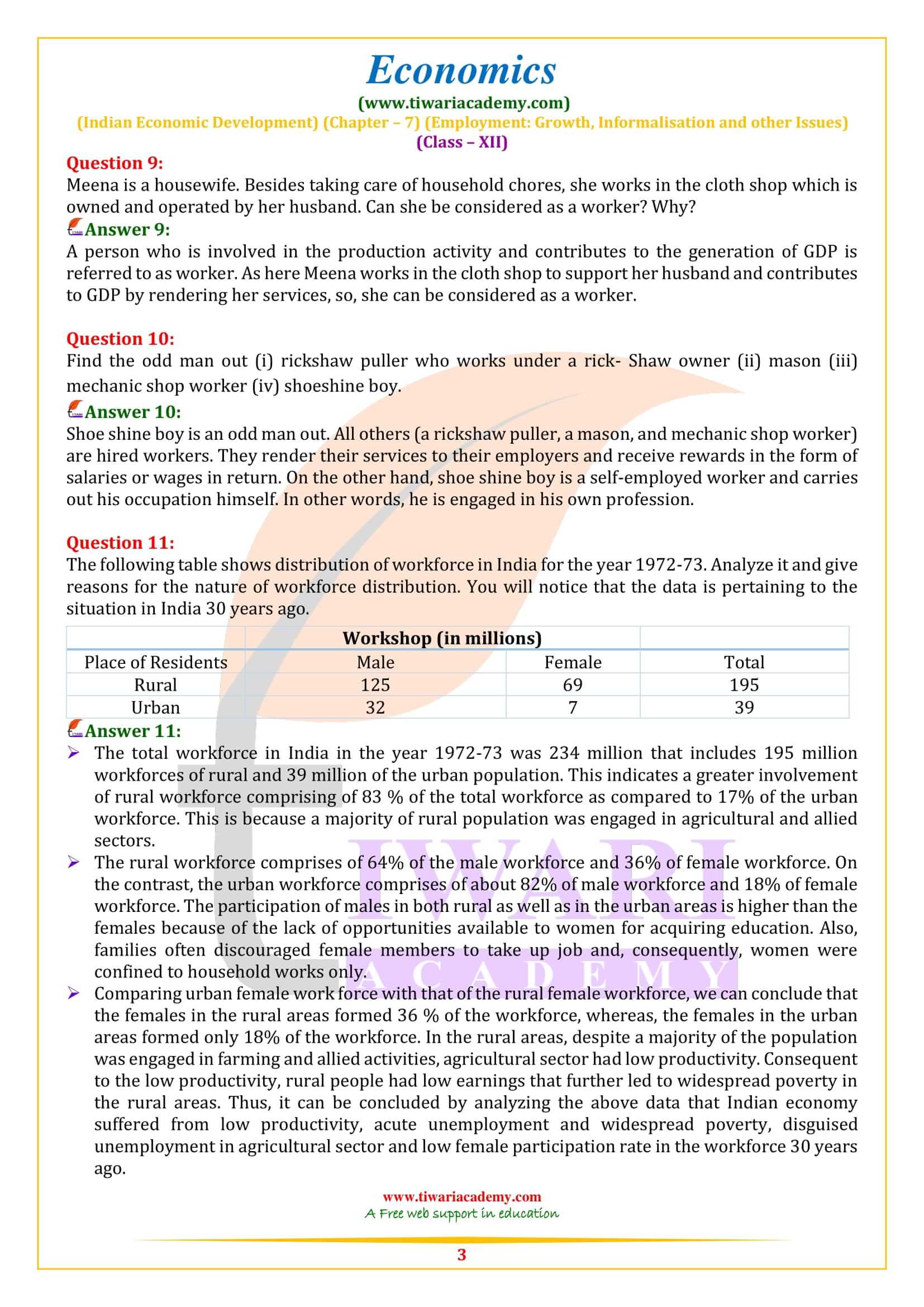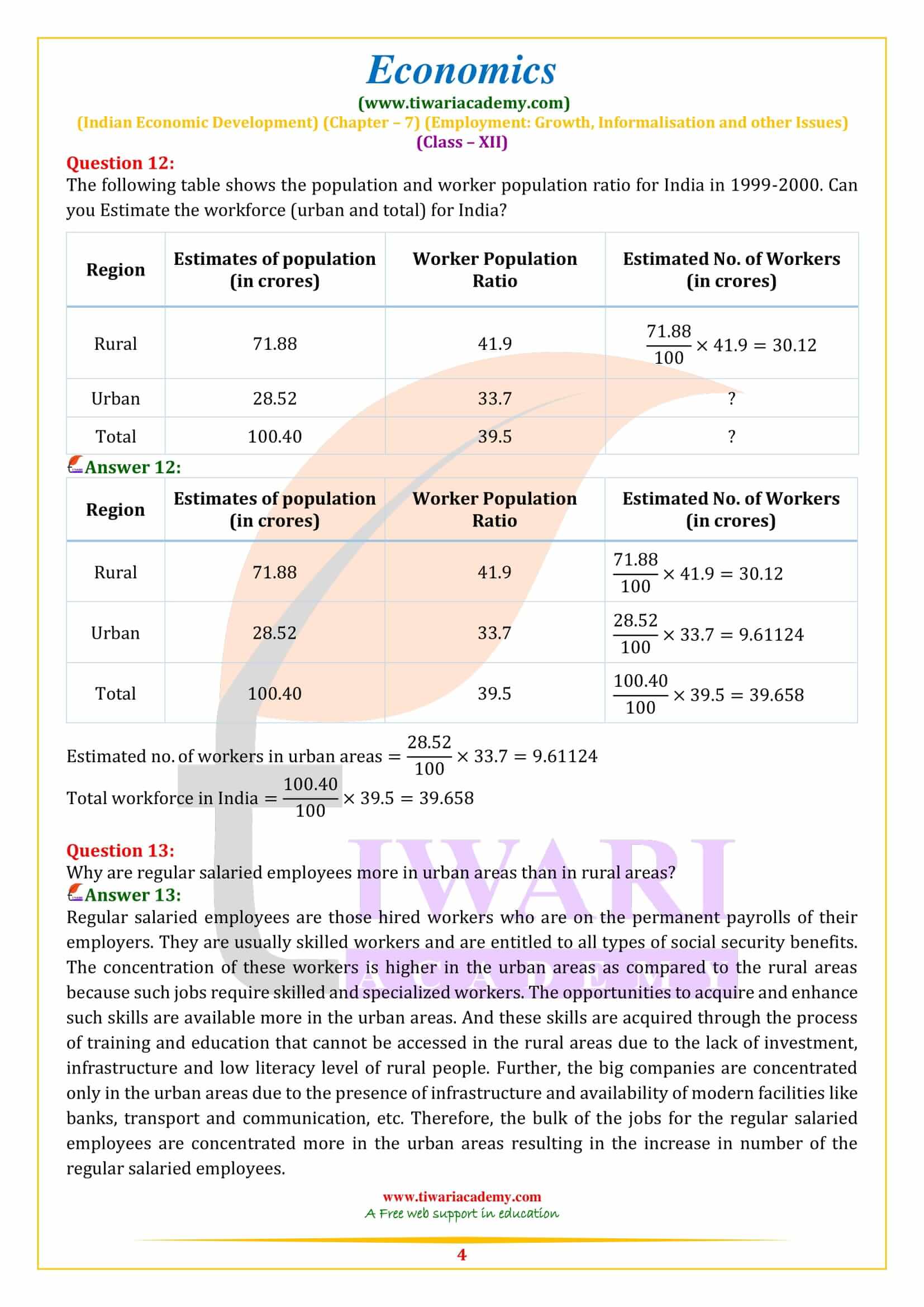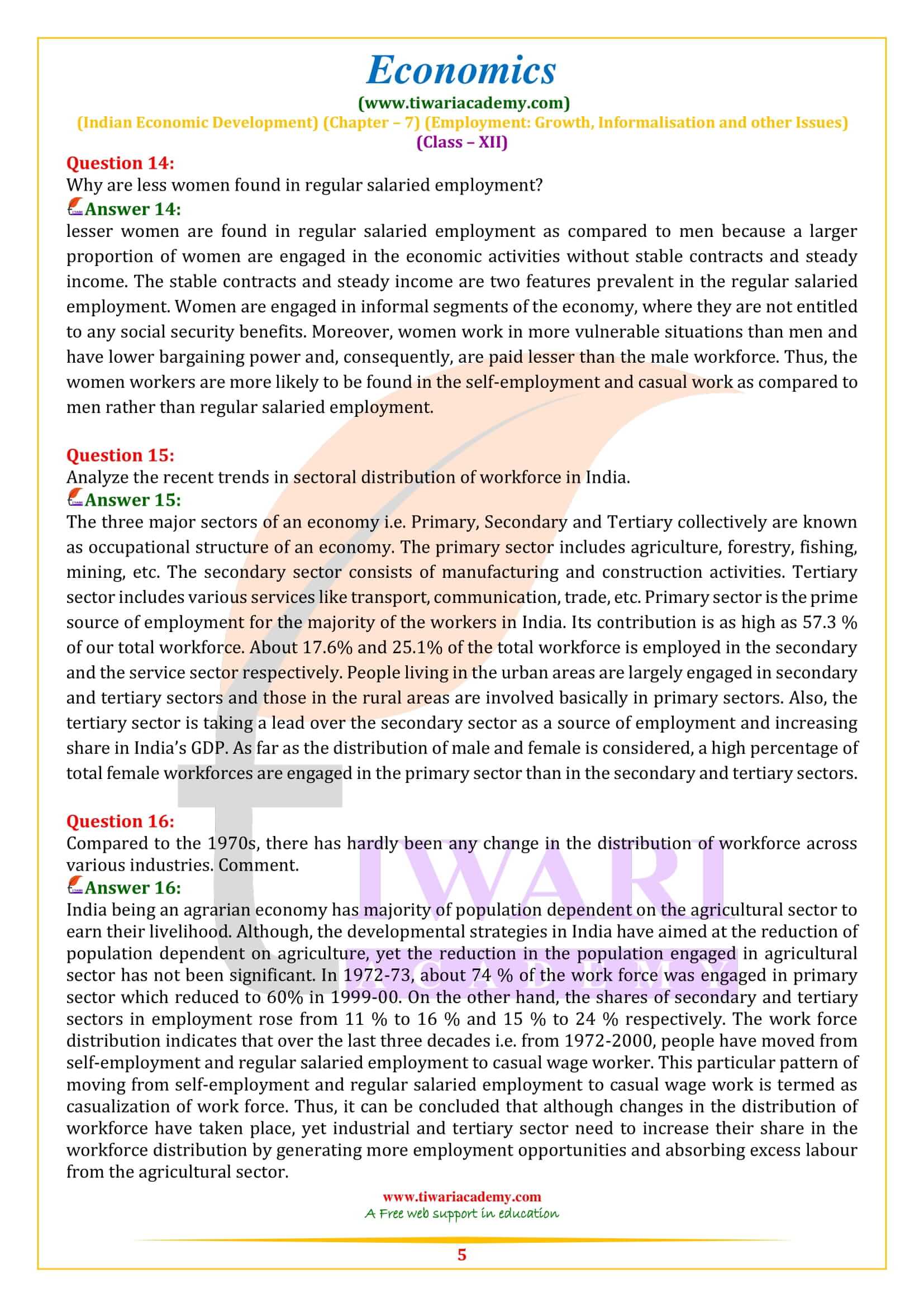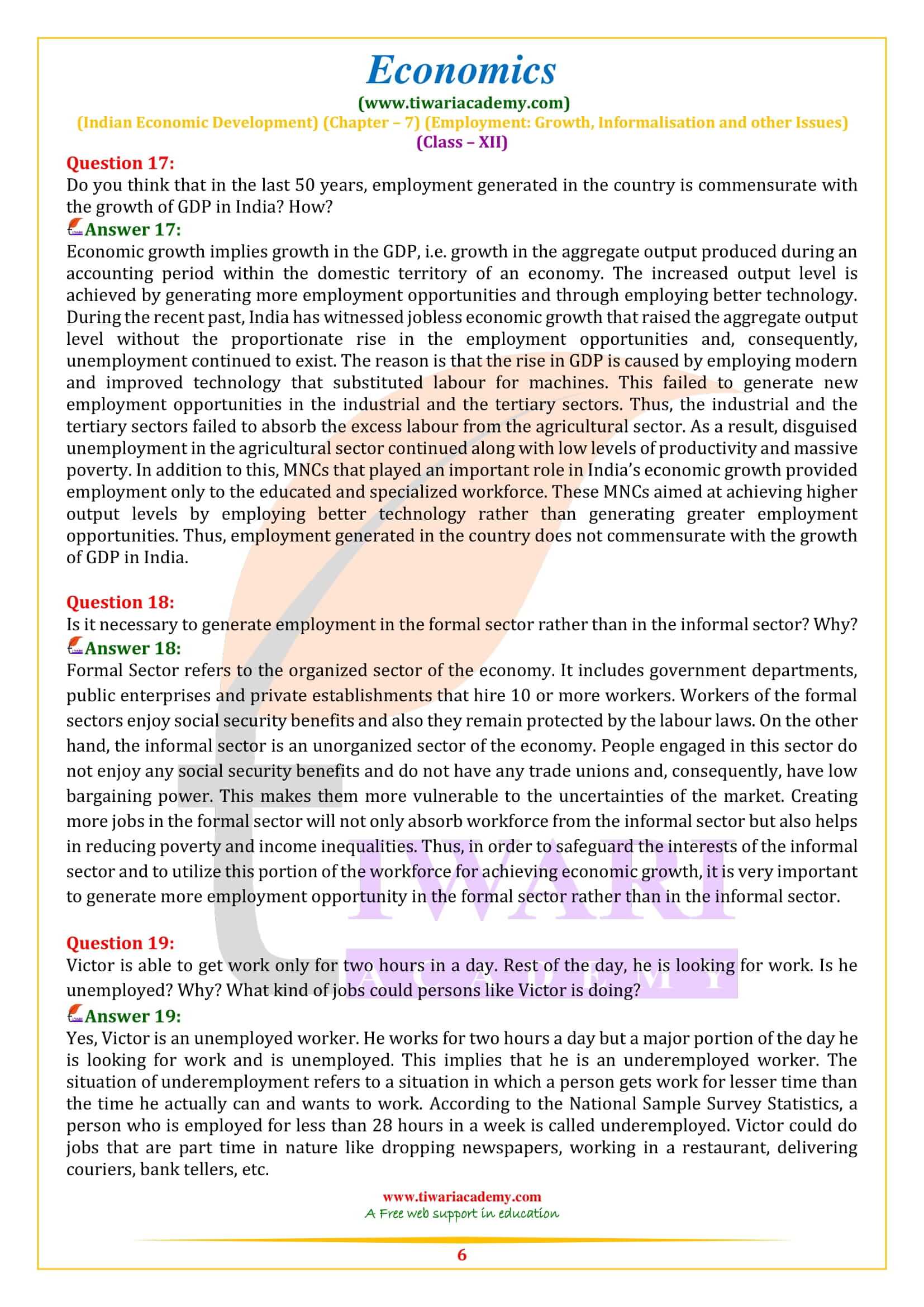NCERT Solutions for Class 12 Indian Economic Development Chapter 7 Employment: Growth, Informalisation and other Issues in Hindi and English Medium updated for session 2025-26. Get here all the important questions and MCQ of class 12 Economics chapter 7 with explanation.
Class 12 Indian Economic Development Chapter 7 Question Answers
Workers and Employment
What is employment? Who is a worker? Once a farmer works on fields, he or she produces food grains and raw materials for industries. Cotton becomes artifact in textile mills and in power looms. Lorries transport product from one place to different. We all know that the full cash worth of all such final products and services created in an exceedingly country in an exceedingly year is named its gross domestic product for that year.
Monetary connection of final commodities
We have a tendency to additionally take into account what we acquire for our imports and find from our exports we discover that there are net earnings for the country which can be or negative or zero. Once we add this earning from foreign transactions, what we tend to get is named the country’s gross national product for that year. Those activities that contribute to the gross national product are known as economic activities. All those that are engaged in economic activities, in no matter capability, high or low, are employees.
Categorisation of Human Resources
Notwithstanding a number of them briefly abstain from work because of unwellness, injury or alternative physical incapacity, weather conditions, festivals, social or spiritual functions, they are additionally employees. Employees additionally embody all those that facilitates the most employees in these activities. We tend to usually think about solely those that are paid by a leader for his or her work as employees. This can be not therefore. Those that are freelance workers are also employees. The character of employment in India is multifarious. Some get employment throughout the year; some others get utilized for a number of months in a year. Several employees do not get fair wages for their work. While estimating the number of workers, all those who are engaged in economic activities are included as employed.
Participation of People in Employment
Worker-population ratio is an indicator that is employed for analysing the utilisation state of affairs within the country. This ratio is helpful in knowing the proportion of population that’s actively causative to the assembly of products and services of a country. If the ratio is higher, it implies that the engagement of individuals is greater; if the ratio of a rustic is medium, or low, it implies that a really high proportion of its population isn’t concerned directly in economic activities. You would possibly have already studied, in lower categories, that the means of the term ‘population’. Population is outlined because the total variety of individuals that reside in a very specific section at a selected purpose of your time.
Rural and Urban skilled workforce
If you would like to understand the worker-population ratio for India, divide the overall variety of employees in India by the population in India and multiply it by one hundred, you’ll get the worker-population ratio for India. Individuals in rural areas have restricted resources to earn the next financial gain and participate a lot within the employment market. Several don’t head to the colleges, schools and alternative coaching. Albeit some go, they discontinue within the middle to hitch the workforce; whereas, in urban areas, a substantial section is ready to check in numerous instructional establishments. Urban individuals have a spread of employment opportunities. They give the impression of being for the suitable job to suit their qualifications and skills.
Contribution of gender in workforce
In rural areas, individuals cannot occupy home as their status might not permit them to try to do so. Compared to females, a lot of males is found to be operating. The distinction in participation rates is incredibly giant in urban areas: for each 100 urban females, solely regarding 14 are engaged in some economic activities. In rural areas, for each 100 rural girls regarding 18 participate within the employment market. Why are girls, in general, and urban girls, above all, not working? It is common to find that where men are able to earn high incomes, families discourage feminine members from seizing jobs.
Self-Employed and Hired Workers
Does the employee-population ratio say something concerning worker’s stand in society or concerning the operating conditions? By knowing the stand with that a worker is placed in associate enterprise, it going to be doable to grasp one dimension — quality of employment in an exceedingly country. It conjointly allows us to grasp the attachment an employee has along with his or her job and also the authority she or he has over the enterprise and over alternative co-workers. Allow us to take 3 employees from the development trade — a cement shop owner, a craftsman and a civil engineer of a construction company. Since the standing of every one among them is totally different from another, they’re conjointly known as others.
Different Labour force
Employees who own and operate an enterprise to earn their sustenance are referred to as freelancer. Thus, the cement shop owner is freelancer. Concerning 52 percent manpower in India belongs to this category. The development employees are referred to as casual wage labourers; they account for concerning 25 percent of India’s manpower. Such labourers are nonchalantly engaged in others’ farms and, in return, get a remuneration for the work done. Employees like the civil engineer operating within the construction company account for 23 per cent of India’s manpower. When a worker is engaged by someone or an enterprise and paid his or her wages on a regular basis, they are known as regular salaried employees.
When we compare the distribution of manpower in rural and concrete areas, you will notice that the freelancer and normal wage labourers are found a lot in rural areas than in urban areas. Within the latter, each self-employment and regular wage salaried jobs are larger. Within the former, since majority of these looking on farming own plots of land and cultivate separately, the share of freelance is bigger.
What are the important topics in the chapter 7 of 12th Economics?
The following are the important topics:
- Types of unemployment
- Measures to boost employment including government policies and Schemes
- Certain important terms like informalisation, Labour force participations rate, work force, self-employment, casual workers, occupational structure and Casualisation of workforce.
What are the new type of questions that can be asked from chapter 7 for class 12th Economics Exams?
The questions based on graphs is the new type of questions can be asked. There may be case based questions also with MCQ and descriptive questions.
What are the different questions of 12th Economics chapter 7 MCQ and Multiple response questions?
Under the multiple response system there can be more than one correct answer. These can also be asked in the 12th Board examinations.

